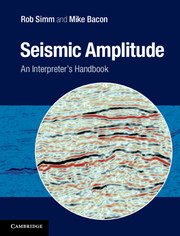Refine listing
Actions for selected content:
1211 results in Ebooks in petroleum sciences
6 - Frontal instability
-
- Book:
- Flow in Porous Rocks
- Published online:
- 05 January 2015
- Print publication:
- 18 December 2014, pp 92-109
-
- Chapter
- Export citation
Preface
-
- Book:
- Flow in Porous Rocks
- Published online:
- 05 January 2015
- Print publication:
- 18 December 2014, pp ix-x
-
- Chapter
- Export citation
4 - Accounting for uncertainty
-
- Book:
- Flow in Porous Rocks
- Published online:
- 05 January 2015
- Print publication:
- 18 December 2014, pp 52-69
-
- Chapter
- Export citation
Index
-
- Book:
- Flow in Porous Rocks
- Published online:
- 05 January 2015
- Print publication:
- 18 December 2014, pp 285-289
-
- Chapter
- Export citation
9 - Gravity-driven flow in porous media
-
- Book:
- Flow in Porous Rocks
- Published online:
- 05 January 2015
- Print publication:
- 18 December 2014, pp 156-195
-
- Chapter
- Export citation
Copyright page
-
- Book:
- Flow in Porous Rocks
- Published online:
- 05 January 2015
- Print publication:
- 18 December 2014, pp iv-iv
-
- Chapter
- Export citation
2 - Porous rocks
-
- Book:
- Flow in Porous Rocks
- Published online:
- 05 January 2015
- Print publication:
- 18 December 2014, pp 11-27
-
- Chapter
- Export citation
11 - Geothermal power and heat storage
-
- Book:
- Flow in Porous Rocks
- Published online:
- 05 January 2015
- Print publication:
- 18 December 2014, pp 227-261
-
- Chapter
- Export citation
12 - Compressibility and gas flows
-
- Book:
- Flow in Porous Rocks
- Published online:
- 05 January 2015
- Print publication:
- 18 December 2014, pp 262-278
-
- Chapter
- Export citation
Contents
-
- Book:
- Flow in Porous Rocks
- Published online:
- 05 January 2015
- Print publication:
- 18 December 2014, pp v-viii
-
- Chapter
- Export citation

The Allocation of Regulatory Competence in the EU Emissions Trading Scheme
-
- Published online:
- 05 July 2014
- Print publication:
- 17 April 2014
Introduction
-
- Book:
- Flow, Deformation and Fracture
- Published online:
- 05 June 2014
- Print publication:
- 05 June 2014, pp 1-9
-
- Chapter
- Export citation
Preface
-
- Book:
- Flow, Deformation and Fracture
- Published online:
- 05 June 2014
- Print publication:
- 05 June 2014, pp xiii-xx
-
- Chapter
- Export citation
Index
-
- Book:
- Flow, Deformation and Fracture
- Published online:
- 05 June 2014
- Print publication:
- 05 June 2014, pp 253-255
-
- Chapter
- Export citation
References
-
- Book:
- Flow, Deformation and Fracture
- Published online:
- 05 June 2014
- Print publication:
- 05 June 2014, pp 243-252
-
- Chapter
- Export citation

Seismic Amplitude
- An Interpreter's Handbook
-
- Published online:
- 05 June 2014
- Print publication:
- 17 April 2014
Dedication
-
- Book:
- Flow, Deformation and Fracture
- Published online:
- 05 June 2014
- Print publication:
- 05 June 2014, pp v-vi
-
- Chapter
- Export citation
Contents
-
- Book:
- Flow, Deformation and Fracture
- Published online:
- 05 June 2014
- Print publication:
- 05 June 2014, pp vii-x
-
- Chapter
- Export citation
Frontmatter
-
- Book:
- Flow, Deformation and Fracture
- Published online:
- 05 June 2014
- Print publication:
- 05 June 2014, pp i-iv
-
- Chapter
- Export citation
3 - The ideal incompressible fluid approximation: general concepts and relations
-
- Book:
- Flow, Deformation and Fracture
- Published online:
- 05 June 2014
- Print publication:
- 05 June 2014, pp 48-62
-
- Chapter
- Export citation
